2024
The Wall Hanging Vanity is the artists' take on the common, traditional piece of floor standing bedroom furniture, but with a contemporary twist. This vanity is small and wall mounted, with an emphasis on form rather than the functionality and efficiency of its use. Despite the almost unrecognizable form of the traditional vanity; used to apply makeup, brush hair, put on jewelry, and get ready/unwind for the day, this rendition can still be used in such a way. It is made from Japanese Oak, Holly, and a Danish Soap Finish. It features a master shelf, with a casework of small, dovetailed drawers above, and a catch-all tray below. Each of these components are elevated away from the shelf via lathe-turned Holly stanchions. A small, but functional mirror hangs on the wall, centered above the hand-carved dish in the face of the shelf. Japanese Oak steam-bent arches encompass the piece.
The design of the vanity is meant to be conceptual in nature, toying with the relationship between the rhythms and patterns of the sun, and the relationship of this to the human experience and our own daily rhythms. Each morning, the sun rises, and each night the sun sets. Likewise, we wake up every morning, and go to bed every night - waking up once the sun has risen, and going to bed once it has set. James wanted to design a piece of furniture that depicted and interacted with this relationship.
Dimensions: 30" x 20" x 6.5"

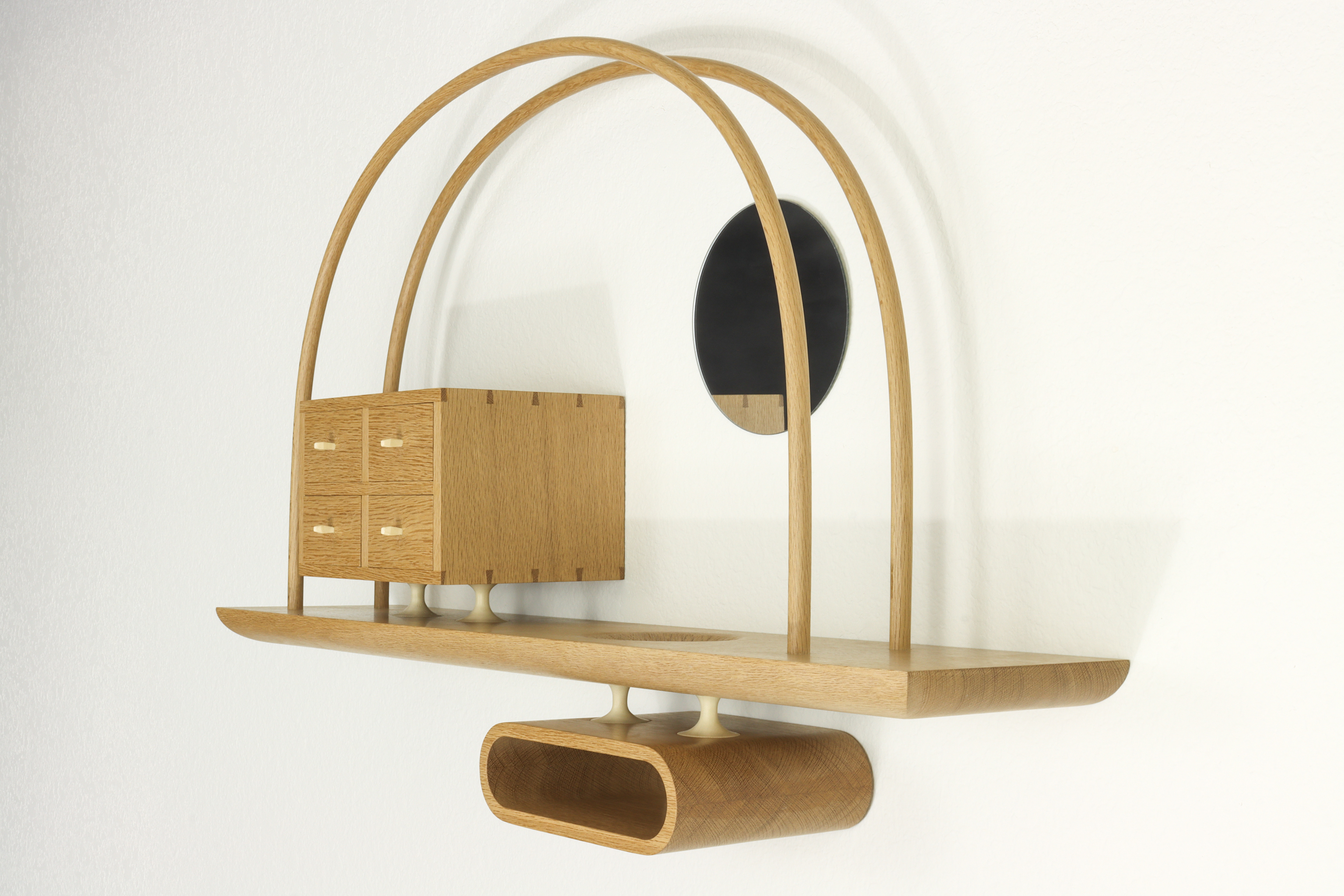
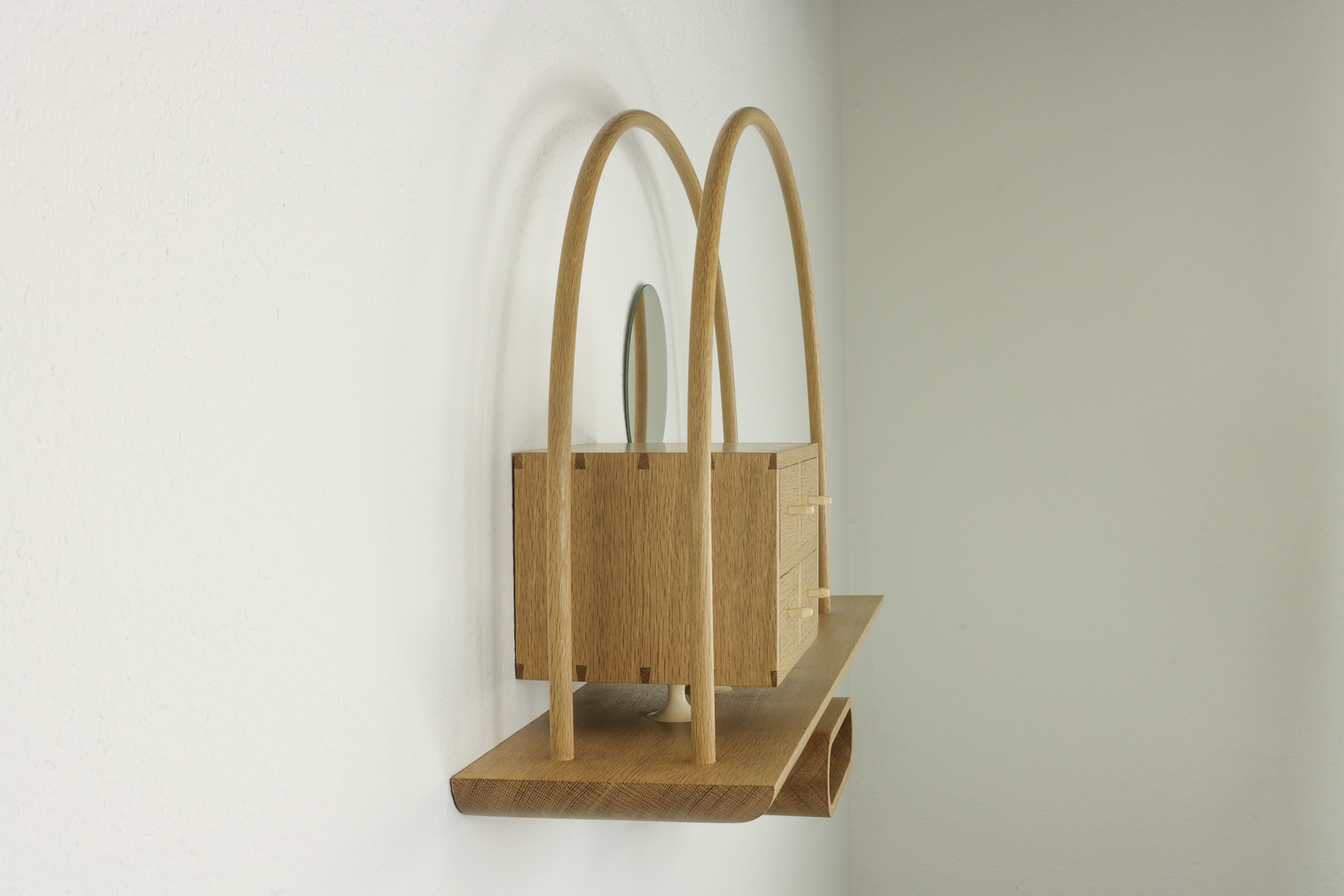
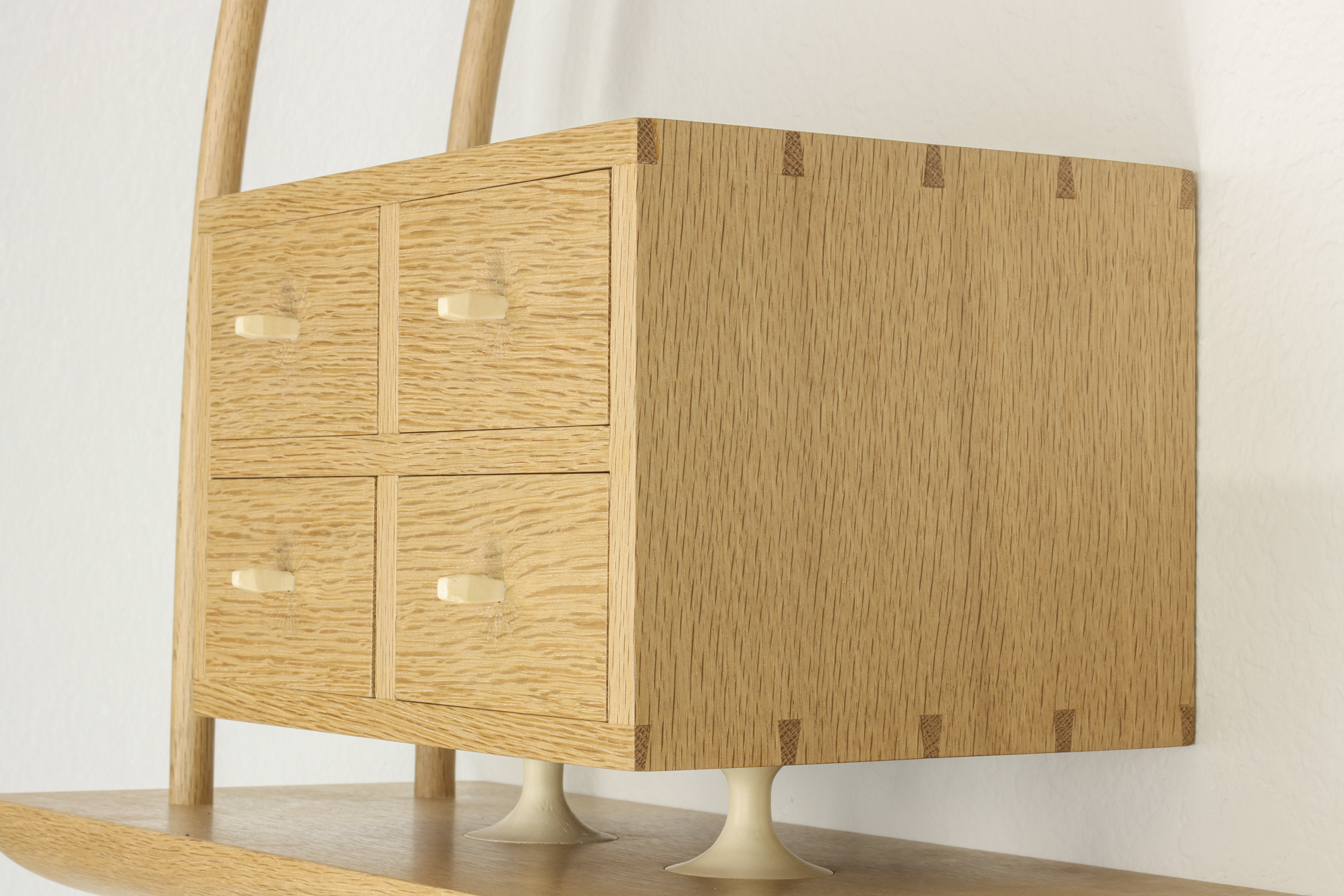
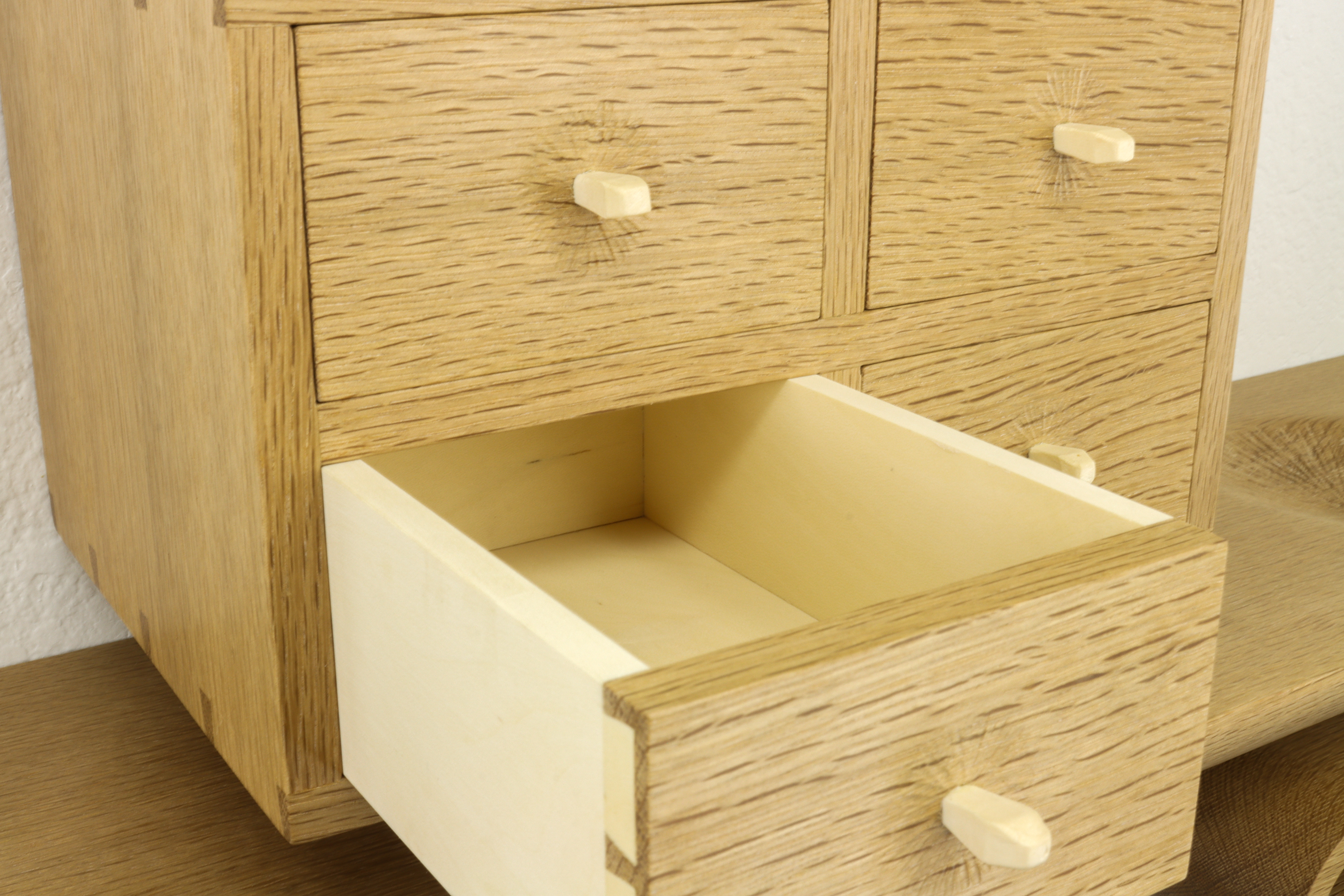






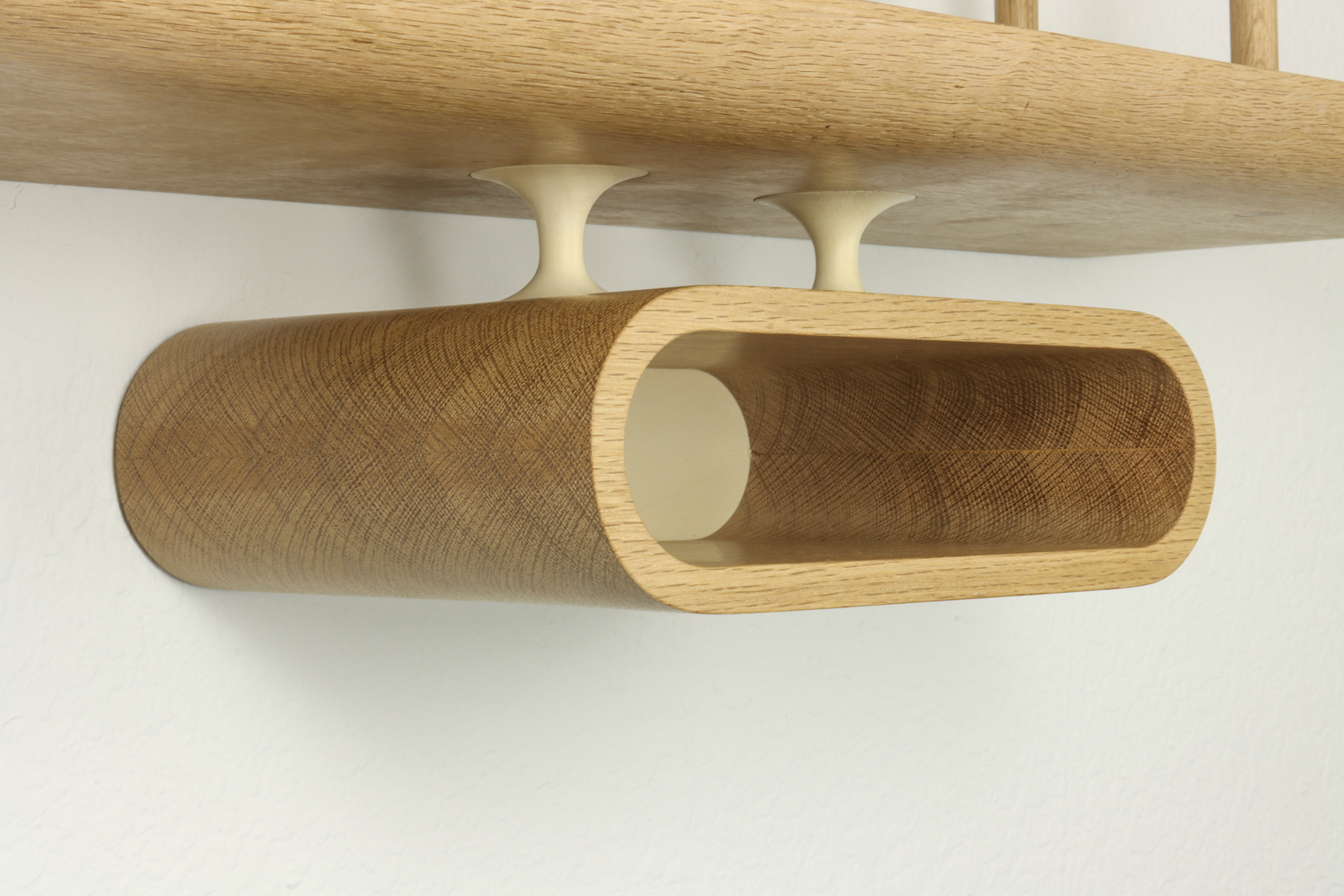


For this piece, the master/central shelf represents the horizon. The wooden arches represent the path the sun makes as it moves across our sky. The mirror is representative of the sun, hung just below the arches, and centered above the carved dish, which reflects light in such a way that it appears darker, as if in the suns shadow. In fact, all the components of the Wall Hanging Vanity play unique and interesting shadows across the shelf surface and the wall. If placed on a wall next to or across from a window, these shadows will dance around throughout the day as the sun's position changes in our sky.
Moving on, the ovular tray on the underside of the shelf represents the sun below the horizon, at the start of the day, and the casework on the top of the shelf represents the sun just before sunset. Additionally, the upper half of the work is more angular, while the lower half is more rounded, which provides contrast, as with the light of the day and the dark of the night. The right side of the piece relates to the East (where the sun rises), and left side to the West (where the sun sets). If one looks under the central shelf, there are inlaid clock faces where the wooden arches show through. These clocks relate directly to the times of sunrise and sunset. At the rear of the piece, on the right (East), represents the time of sunrise on the day James started the fabrication of the work, and on the left (West), the time of sunset the same day. The right of the front arch represents the time of sunrise on the day of completion, and the left, sunset on that day. This aspect of the project was inspired by On Kawara's Date Paintings series.


Additionally, the design of the small, dovetailed drawers are noteable. Each drawer is comprised of solid Holly walls, back, and bottom, with a Japanese Oak drawer face. Centered on each face is a hand-carved Holly drawer pull, with carvings circulating around it, which represents the sun's rays. All four drawers are piston-fit to their own cavities. For this, I designed a sort of notation system in the layout of my dovetails to keep track of which drawer goes where. Like reading a book, the drawers are numbered left to right, top of bottom. The number of tails present in the dovetail joint tells what drawer number it is. One tail is drawer 1, and two tails is drawer 2, and so on. See detail images below.


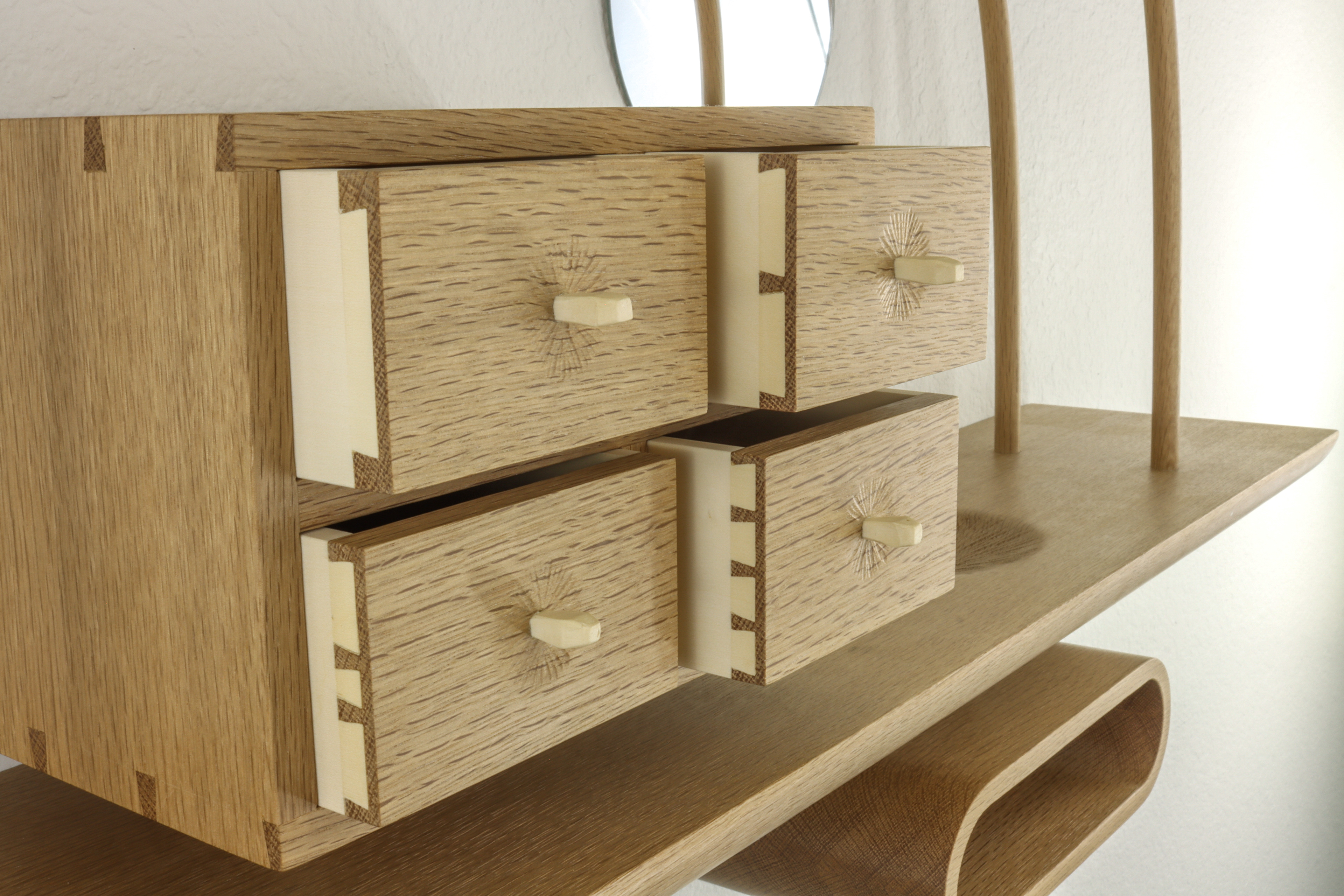
This piece was shown at the On the Line/En la Línea exhibition at the SDSU University Gallery in 2024. A show featuring works from artists located in the San Diego/Tijuana and El Paso/Ciudad Juárez regions.
To read more about this piece and its development, see the "Study of Form" tab on the navigation menu of this website.